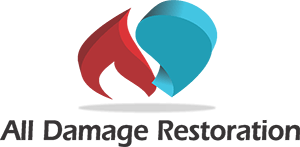
Mold infestation is a serious concern that can affect not only the structure of a building but also the health of its occupants. Understanding the professional Mold Remediation Process is crucial for effectively addressing this issue. This guide will outline the critical steps involved in the process, ensuring a comprehensive approach to mold elimination and prevention.
Step 1: Mold Inspection and Identification
Importance of Professional Inspection
A thorough inspection by certified experts is the first step in the mold remediation process. This involves identifying the extent of mold growth and the source of moisture that’s facilitating it.
Tools and Techniques for Effective Inspection
Professionals use advanced tools such as moisture meters and infrared cameras to detect mold in hidden areas, ensuring no spot is overlooked.
Step 2: Containing the Mold
Preventing Mold Spore Spread
Once mold is identified, the next step is to contain it. This often involves using physical barriers and negative air pressure to prevent mold spores from spreading to other areas.
Importance of Air Quality Control
Controlling air quality is crucial during this phase. HEPA air scrubbers and filters are commonly used to cleanse the air of mold spores.
Step 3: Removing the Mold
Techniques for Effective Mold Removal
Removing mold can vary depending on the infested materials. Non-porous materials can be cleaned, while porous materials often need to be discarded.
Safety Protocols During Removal
Safety is paramount during mold removal. Professionals wear protective gear and follow strict protocols to avoid contamination and health risks.
Step 4: Cleaning and Sanitizing
Thorough Cleaning of the Area
After mold removal, the area, along with any affected belongings, is thoroughly cleaned and sanitized. This step is vital to eliminate any residual spores and prevent recurrence.
Use of Specialized Cleaning Agents
Professional-grade antimicrobial and antifungal agents are used to ensure a thorough cleanse, contributing to the overall effectiveness of the Mold Remediation Process.
Step 5: Restoration and Prevention
Repairing and Restoring the Affected Area
Restoration may involve minor repairs like painting or major ones like wall reconstruction. The goal is to restore the area to its pre-mold condition.
Strategies for Mold Prevention
Post-remediation, professionals will offer advice on preventing future mold growth, such as controlling humidity levels and fixing leaky pipes.
Frequently Asked Questions
How Long Does the Mold Remediation Process Typically Take?
The duration of the mold remediation process can vary significantly based on the mold’s extent and the size of the area affected. Small-scale remediations might take a few days, while larger, more complex projects could take several weeks.
Can Mold Come Back After Professional Remediation?
If the underlying moisture problem that caused the mold growth is not resolved, there is a chance of mold returning. Professional remediation aims to address both the mold and its cause to prevent recurrence.
Is It Safe to Stay in My Home During Mold Remediation?
This depends on the severity of the mold infestation. For minor cases, it may be safe to stay in the home, provided that proper containment measures are in place. However, for extensive mold issues, it’s often recommended to stay elsewhere during the process.
Will Mold Remediation Eliminate All Mold From My Home?
The goal of mold remediation is to return mold levels to normal, natural levels. Absolute elimination of all mold spores is impractical as they naturally occur in the air.
What Are the Health Risks Associated With Mold in Homes?
Exposure to mold can cause various health issues, particularly for those with allergies, asthma, or compromised immune systems. Common symptoms include coughing, sneezing, skin irritation, and respiratory issues.
What Should I Do If I Find Mold in My Home?
If you find mold in your home, it’s important to contact a professional mold remediation service, especially if the affected area is large or if there are health concerns. Attempting DIY mold removal in significant cases can exacerbate the problem.
Are There Any Preventative Measures I Can Take to Avoid Mold Growth?
Preventing mold growth involves controlling moisture levels in your home. This can be achieved through proper ventilation, using dehumidifiers, promptly repairing leaks, and ensuring your home has adequate drainage.
How Do Professionals Determine If the Mold Remediation Was Successful?
After remediation, professionals typically perform a post-remediation inspection and testing to ensure that mold levels have been returned to safe, normal levels and that the source of the moisture has been effectively dealt with.
What Types of Surfaces Can Mold Grow On?
Mold can grow on various surfaces, particularly porous materials like wood, drywall, and carpet. Non-porous surfaces like metal and plastic can also support mold growth if there is an accumulation of dust or organic material.
Will Mold Remediation Services Also Repair Water Damage?
Mold remediation services focus on removing mold and preventing its return. If water damage repair is needed, this is typically addressed as a separate but related service.
Trusting the Experts in Mold Remediation
The Mold Remediation Process is intricate and requires professional expertise. For reliable mold remediation and prevention services, turn to All Damage Restoration, your trusted partner in handling all aspects of mold prevention, elimination, and restoration. Their comprehensive services ensure that your property is not only free from mold but also protected against future infestations.
